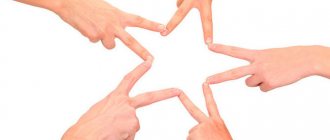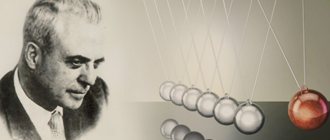With neuroses, muscle tension is often observed. Cramps occur in most people who have been exposed to severe stress. This is because there is a direct connection between the brain and muscles. With neuroses, the functioning of the main organ of the central nervous system is disrupted, as a result of which it sends incorrect signals. If you suspect a disorder of the nervous system, you should consult a doctor: treatment of muscle spasms should be carried out under the supervision of a specialist.
Types of muscle spasms
Muscle overstrain that occurs during neuroses is due to various reasons. Spasms in disorders of the nervous system occur:
- In the facial muscles. In some patients, neuroses affecting this area affect the trigeminal nerve.
- In the muscles of the chest. The manifestation of neurosis in this case is similar to the clinical signs of intercostal neuralgia.
- In the muscles of the cervical spine. This form of neurosis is accompanied by respiratory disorders.
- In the muscles of the upper and lower extremities.
In case of damage to the back and lower back, neuromuscular disorders reduce a person’s motor activity.
Muscle twitching throughout the body: causes of this condition and its correction
Muscle twitching or fasciculation is an involuntary contraction of a muscle group that receives a nerve impulse from a single motor neuron. It looks like a rapid contraction of a muscle bundle or muscle twitching. If such fasciculations are isolated and occur rarely, then they can be ignored, because they can occur in a healthy person. If muscle twitching occurs in the same muscle group constantly, muscle atrophy begins, reflexes and sensitivity change, then this is a reason to visit a neurologist.
Causes of muscle tension
The main cause of neuroses is considered to be severe stress, under the influence of which the body produces special hormones in order to ensure its own protection.
These substances speed up the functioning of internal organs and systems. Under normal conditions, the concentration of these hormones increases when real danger arises. However, with nervous disorders, the brain sends incorrect signals, resulting in a spasm.
It is important to understand that myopathy and muscle neurosis are two unrelated conditions. The first is due to genetic inheritance. With myopathy, muscle fibers are also affected, and the further course of the disease causes their atrophy.
With neurosis, muscle tone increases. Systematic stress provokes the appearance of seizures. With myopathy, similar phenomena are observed. But the appearance of such symptoms is due to other reasons.
In addition to stress, physical fatigue leads to the occurrence of muscle neurosis. Also, spasms often bother patients with vegetative-vascular dystonia, in which the peripheral part of the nervous system malfunctions.
Drug treatment
There is no single method for treating muscle fasciculations, since the causes are too different. Treat the underlying disease that caused the twitching.
Thus, when a nerve root is compressed, decongestants, vascular and anti-inflammatory drugs, as well as painkillers, are of primary importance.
Lesions to the trunk are most often caused by impaired blood flow; its restoration is the main task of the doctor. Isaac's syndrome is an autoimmune disease; treatment uses blood purification (plasmapheresis) and high doses of glucocorticoid hormones (pulse therapy).
For the consequences of facial paralysis, massage and biofeedback methods are most effective. Intoxication and its consequences are treated with plasmapheresis, massive infusions and a pressure chamber.
Signs of muscle neurosis
Muscle tension during neurosis is the main, but not the only sign indicating a neurological disorder. Patients also experience the following symptoms of muscle neurosis:
- the appearance of myofascial muscle pain, which is localized in certain areas;
- burning, tingling in problem areas;
- numbness;
- headaches caused by surges in blood pressure;
- pain in the heart area caused by an attack of tachycardia;
- sleep problems;
- anxiety, increased excitability.
Symptoms of neurological disorders are varied, which complicates the diagnosis of the pathological condition. In particular, it is important to distinguish muscle pain caused by neurosis from the discomfort caused by intercostal neuralgia. Both problems require different approaches to treatment.
Body-oriented therapy
To understand where experiences live in the body, you need to create an individual map. It is enough to schematically draw a human figure and sit for a few minutes, listening to yourself. It is important to disconnect from all external stimuli during this time, remove all sources of sound and light.
Problem areas will make themselves felt by pain or discomfort. They need to be marked on the diagram, the meaning is:
- eyes - refusal of the real truth of life;
- face – the need to wear a mask, because it is unknown how people will react to the real facial expression;
- neck – fear of showing true feelings;
- chest – fear of loneliness, conviction of one’s unworthiness;
- back - fear of not living up to expectations;
- shoulders - fear of being weak;
- solar plexus area – fear of being unrecognized in society;
- stomach - fear for life;
- pelvis – sexual fears, fear of lack of love and violence;
- brushes - problems with communication;
- hands - fear of contact with the world, such people become computer specialists when there is no need to contact living people;
- legs – lack of vital support, no confidence in one’s rightness.
The detected problems are discussed with a psychotherapist, and the body is massaged.
Author of the article: Psychiatrist, psychotherapist Larisa Vladimirovna Neboga
Many people have suffered from muscle neurosis at least once in their lives, caused by various factors. With such a disorder, a person experiences not only emotional pressure, but also extremely unpleasant physical sensations. You can also reduce symptoms at home. Massage, sports training, contrast showers and essential oils will help with this.
How to relieve muscle tension?
Constantly contracted muscles create severe discomfort and interfere with normal functioning. In the treatment of the problem under consideration, measures aimed at eliminating the causative factor (neurosis) play an important role. For this purpose, drug treatment and psychotherapeutic intervention are used.
Drug treatment
Drug treatment is used to eliminate neurosis, thereby eliminating muscle diseases. The following groups of drugs are used in therapy:
- nootropics;
- neuroleptics;
- antidepressants;
- tranquilizers.
Tranquilizers are used in the acute period, when the pathological condition causes severe pain. If spasms of the spinal muscles occur, treatment is carried out in a short course using the following medications:
- "Sibazon";
- "Diazepam";
- "Phenibut";
- "Phenazepam."
Antidepressants have a direct effect on the nervous system, bringing it back to normal. Restoration of the central nervous system is carried out using:
- "Prozac";
- "Elices";
- "Fluoxetine";
- “Sertraline.
Nootropics, which include Mexiol, Piracetam, Nootropil and other drugs, stimulate brain function. Medicines increase the absorption of glucose by the cortical layers of the organ and stabilize the membranes.
If neurosis is accompanied by mild symptoms, antipsychotics are used. This group includes Egloil, Sonapax, Melleril and a number of other drugs. Neuroleptics ensure rapid recovery of the nervous system. However, such drugs are used extremely rarely.
Also in the treatment of muscular neuralgia, antispasmodics are actively used, which eliminate spasms.
Psychotherapeutic techniques
To eliminate muscle tension caused by neurosis, psychotherapeutic techniques are often used. This treatment is selected on an individual basis. The duration of the therapeutic course can be several years.
For neurological disorders, the following techniques are used:
- hypnosis;
- desensitization (used for single stress);
- cognitive or behavioral therapy;
- psychodynamic therapy.
In case of neurotic muscle tension, treatment tactics are constantly adjusted taking into account the achieved results.
Physiotherapy
Physiotherapeutic techniques have a complex effect on the body.
This treatment stimulates blood circulation, eliminates spasms and performs other functions.
In the treatment of muscle neuroses the following are used:
- darsonvalization (electric shock);
- ultraviolet or electromagnetic irradiation;
- exposure to low-frequency pulse currents;
- electrophoresis.
When relieving muscle tension through physical therapy, you need to remember that techniques must be selected taking into account the individual characteristics of the patient.
Massage
When muscle tension occurs, massage is considered one of the most effective techniques that can eliminate spasms and pain. This procedure also has a positive effect on the patient’s psycho-emotional state.
To achieve maximum muscle relaxation, it is recommended to perform a relaxation massage. The procedure lasts on average 1 hour. In case of muscle tension, the most effective is a targeted effect on the problem area.
Exercises to relieve muscle spasms
Physical exercises are selected based on the affected area. If a spasm of the facial muscles is diagnosed, it is recommended:
- Stretch your lips in a smile to their maximum length.
- Close your eyes tightly and open your eyes.
- Pull your lips forward.
- Raise and lower eyebrows.
- Rub your face with your hands, imitating washing.
Facial movements should be performed in front of a mirror, achieving facial symmetry.
Relaxing exercises for the abdominal muscles for neurosis can be performed as follows:
- Take a sitting position with your feet parallel to each other. Start breathing slowly and deeply into your belly. The exercise is performed for a minute.
- Lean back, raising your heels above the floor to their maximum height. Hold this position for a few seconds. After this, your legs should be lowered as slowly as possible.
There are other exercises aimed at eliminating muscle spasms and overexertion. Exact recommendations regarding the correct conduct of exercises should be obtained from a doctor.
Ways to deal with muscle blocks
A universal and one of the simplest and most effective exercises is “Relaxing muscle tension through tension.” It is necessary to tense all muscles at the same time, but first practice in stages:
- clench your hand into a fist;
- bend your hand at the wrist joint (forearm muscles);
- raise your arms to shoulder level and bend your elbows;
- bring your shoulder blades together, bend your lower back and stretch down;
- close your eyes and bring your eyebrows to the bridge of your nose;
- wrinkle your nose;
- clench your teeth and spread the corners of your lips to the sides;
- mentally bend your neck forward, but imagine that you are resting against an invisible obstacle (your head will remain in place, but tension will arise);
- draw in your stomach as much as possible;
- tense your buttocks, “walk” like them;
- tighten and draw in the muscles of the perineum;
- from a sitting position, stretch your legs (tighten the thigh muscles);
- flex your feet as if you have a clubfoot (calf strain);
- squeeze your toes.
Tighten as many areas as you can, count to 10, and suddenly relax. Lean back in your chair and exhale forcefully through your mouth. If you feel oxygen starvation, then take a few more deep breaths and long exhalations. Remember the state of relaxation, enjoy it. During the exercise, do not hold your breath, try to breathe deeply.
This technique was proposed by Dr. Kurpatov. As the specialist notes, with simultaneous tension and stretching of the muscles, a protective reaction is activated - maximum relaxation. This is the basis of the considered mini set of exercises for relieving muscle-emotional tension. Repeat it 7-10 times a day and within a week you will be able to relax without tension, but only with the mere thought of relaxation.
It is important! Don't try to tense your whole body at once without preparation. Also approach individual steps with caution. It is better to visit a consultation with a chiropractor or watch a thematic video with a detailed explanation. Sudden and careless movements can cause harm: tearing, stretching, displacement.
Techniques for relaxing body and soul
Muscle tension is a psychosomatic problem, that is, to eliminate it you need to work with both the body and the soul. Muscle lumps are clots of energy (suppressed emotions) that cannot move further or pass through the body. Remember how the position of our body changes during certain emotions and life situations. For example, how the arms and shoulders of a tired woman carrying heavy packages stretch to the ground.
The more often a person experiences an emotion, the more stable the deformation of the part of the body responsible for it. The techniques discussed above and correction of thinking will help you heal. If you learn to express emotions and surround yourself with positivity, then the tension will go away on its own.










